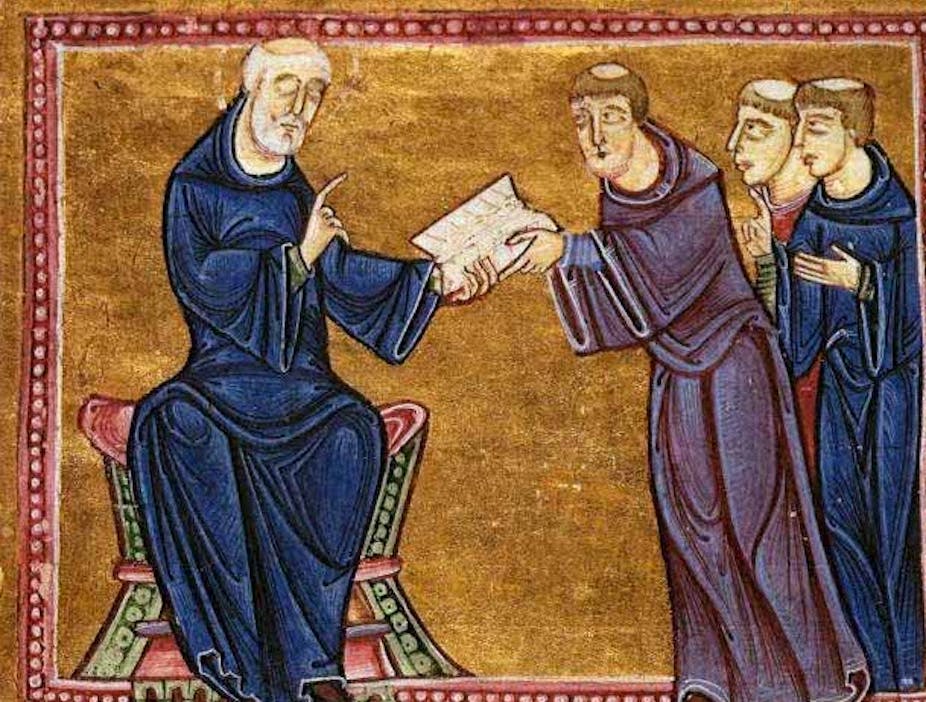Have you ever wondered why the extra day of the leap year falls on February 29, an odd date in the middle of the year, and not at the end of the year on December 32? There is a simple answer, and a slightly more complex one.
Let’s start with the simple answer. Several ancient cultures (including early Christians) believed the world was created in the spring and therefore March was the beginning of the year. This means that when the Roman calendar added an extra day in February, they were in fact adding a day at the end of their year. So the simple answer is that we put the leap day at the end of February because the Romans did.
Except that isn’t exactly true. The Romans did not add an extra day on February 29, but on February 24, which is where the more complicated answer begins. The Romans kept a calendar by counting backwards from specific set times of the month, the kalends (March 1), the nones (March 7) and the ides (March 15). Julius Caesar was famously told in Shakespeare’s play to: “Beware the ides of March,” also known as March 15, the day of his murder.
If the Romans started counting on the first day of March, which they called the kalends and moved backwards, then their days would progress retrospectively like this: the kalends is March 1, second kalends is February 28, third kalends is February 27 and so on until February 24 is the sixth kalends of March. On a leap day, they added a second sixth kalends of March, which they called the “bissextile day”, that is the second sixth day. In older writings of various kinds, you will still see people call the leap day, February 29, the bissextile day.
Monks and the leap day
This practice of adding a leap day in February continued into the middle ages and was taught in monastic classrooms. Writing in the 11th century, the Anglo-Saxon scholar Byrhtferth of Ramsey explained to his students: “[The bissextile day] is so called because bis is ‘twice’ and sextus is ‘sixth,’ and because in that year we say ‘sixth kalends of March’ [February 24] today and the next day we say ‘sixth kalends of March’ [February 25] again.”
Byrhtferth’s students were monks and priests, and they needed to know about the leap day so that they could calculate religious feasts like Easter correctly. Easter is tricky to calculate because it is the first Sunday, after the first full moon, after the spring equinox (March 21 in medieval observance, March 20 in modern reckoning).
If you fail to include the leap day, you will also place the spring equinox on the wrong day, and suddenly your parish is celebrating a whole host of religious observances from Ash Wednesday, to Lent, to Holy Week, to Pentecost on the wrong day.
For Byrhtferth and his contemporaries celebrating these holy feasts on the wrong day was no small matter. They believed that the correct reckoning of time lies beneath the very fabric of the universe.

Byrthtferth was known for elaborate diagrams and this (left) is his most famous one. This diagram shows the cosmic correspondence between the times of the year (represented in the outside circuit by the astrological signs) with the equinoxes and the solstices positioned at the corners.
As you move to the interior diamond shape, you see the four elements (earth, wind, fire and water), the four stages of a man’s life (youth, adolescence, maturity and old age) and the four seasons.
The interior diamond has the four cardinal directions in Greek (north, south, east and west), positioned in such a way that they spell “Adam”, which refers to the first man, but also the human nature of Christ. Taken together, this diagram shows how elements on earth and heaven relate to each other and are held in balance with Christ at the centre and bound on the outside by time, which controls and orders the world.
For Byrhtferth and many medieval churchmen like him, calculating dates correctly is about more than the proper observance of religious feasts – it is about honouring God’s role in the creation of the universe.
Byrhtferth’s monastic classroom also shows why the simple answer “because the Romans did it” isn’t adequate to explain why we still insert this leap day in February, nearly 1,600 years after the fall of Rome.
At any point, the leap day could have been changed to something that made more sense in a modern calendar. However, the date needed to remain in February throughout the middle ages – and still does – so that the extra day is inserted before the spring equinox and Easter celebrations are kept on track.

Looking for something good? Cut through the noise with a carefully curated selection of the latest releases, live events and exhibitions, straight to your inbox every fortnight, on Fridays. Sign up here.

